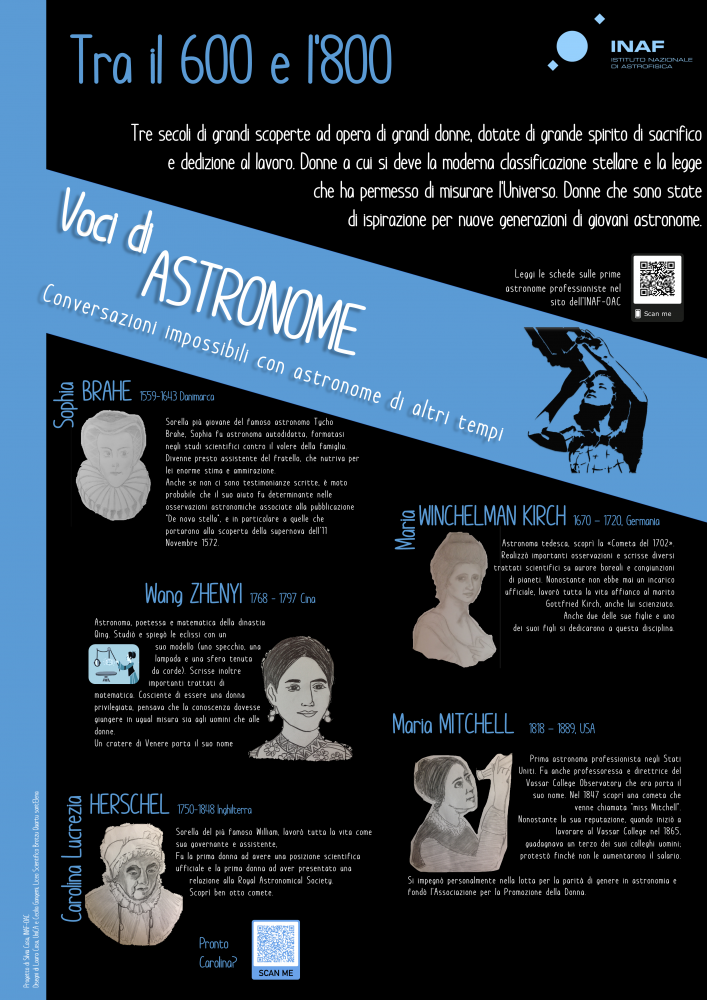Voices of Women Astronomers – between the 1700s and 1900s (1)
SOPHIA BRAHE (1559 – 1643)
The younger sister of the famous astronomer Tycho Brahe, Sophia was a self-taught astronomer, educated in scientific studies against her family’s wishes. She soon became her brother’s assistant, who held her in great esteem and admiration.
Although there are no written records, it is highly likely that her assistance was crucial in the astronomical observations associated with the publication “De nova stella,” particularly those leading to the discovery of the supernova on November 11, 1572.
MARIA WINCHELMAN KIRCH (1670 – 1720)
A German astronomer, she discovered the “Comet of 1702.” She made significant observations and wrote several scientific treatises on auroras and planetary conjunctions. Despite never holding an official position, she worked alongside her husband Gottfried Kirch, who was also a scientist, throughout her life.
Two of her daughters and one of her sons also pursued this field.
NICOLE-REINE LAPAUTE (1723 – 1788)
She worked with astronomer Jerome Lalande and mathematician Alexis Clairaut, and using Newton’s laws, she became one of the best astronomical calculators of her time.
She calculated the return date of Halley’s Comet and in 1762 calculated the parameters of the solar eclipse that would be seen in 1764.
CAROLINA LUCREZIA HERSCHEL (1750 – 1848)
The sister of the more famous William, she worked her entire life as his assistant, contributing to his studies, although she always remained in the background.
Nevertheless, she was the first woman to hold an official scientific position and the first woman to present a paper to the Royal Astronomical Society.
She discovered eight comets and was likely the first woman to do so.
WANG ZHENYI (circa 1768 – 1797)
An astronomer, poet, and mathematician of the Qing dynasty. Despite her short life, she was interested in astronomy, studied and explained eclipses, and built her own model using a mirror, a lamp, and a sphere held by cords.
She wrote important mathematical treatises.
CATERINA SCARPELLINI (1808 – 1873)
The niece of scientist Feliciano Scarpellini, she began her career as his assistant at the Sapienza Astronomical Observatory in Rome. She had a deep knowledge of the solar system and also engaged in the observation of meteorological and astronomical phenomena.
She documented the observation of the great comet of 1854 and that of 1861, the solar eclipse of 1860, and the passage of meteor showers between 1861 and 1868.
To disseminate the data from her investigations and the work of the observatory within the Papal State and abroad, she founded the journal The Scientific Correspondence in Rome. Universal Bulletin , which received communications from various Italian scientists, the Royal Academy of Sciences of Brussels, and English and French institutes, aiming to update and coordinate research activities.
In 1872, she received the gold medal from the Italian State for the high value of her research.
